“Eavesdropping on the Human World”
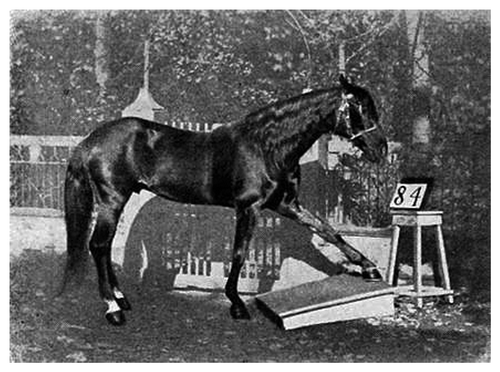
Clever Hans with board for tapping
More Reflections on Animals, Humans, and Being Smart.
People flocked to see Clever Hans. He wasn’t an acrobatic Lipizzaner or the Secretariat of his day. But when his owner asked “What is 4 + 8?” the horse tapped his hoof twelve times. Hans could count the number of people in the audience. He could count how many of the men were wearing hats. He could subtract, multiply, divide, and figure fractions. He could tell time. He could spell words by tapping out the letters (one for A, two for B, etc.). He could see a painting and tap out the artist’s name, hear a melody and tap out the composer’s. He was the next best thing to a talking horse.
Or so people, including his owner, believed. If you’ve run across the name Clever Hans before, it was probably in a psychology text or encyclopedia. What’s astounding about this horse’s story is how it encapsulates the weird ways that people have overvalued, undervalued, and generally misconstrued animal intelligence.
In 1871, Darwin argued that the theory of evolution meant that “The difference in mind between man and the higher animals, great as it is, certainly is one of degree not of kind.” The claim was highly controversial, but many scientists were open to the possibility and even, as the primatologist Frans de Waal says, “eager to find higher intelligence in animals.” Some people, including Hans’s owner, were more eager than others.
Starting in the 1890s, Wilhelm Von Osten, a retired math teacher, adapted the teaching methods he had used with his human pupils (plus carrots, pieces of bread, and lumps of sugar) to teach two horses math, and more. The second one excelled. Excited by Hans’s apparent mental gifts, von Osten began to show the German public what his horse could do–and what he could do was astonishing. In addition to math, Hans could tell time, read a calendar, and tap out the interval between two notes. No surprise, Clever Hans became a national and international sensation. He was the subject of vaudeville songs, Hans toys were sold, and his image appeared on postcards and liquor bottles. (Von Osten did not profit from all of this.) Even the Kaiser stopped by to see him. Von Osten must have dedicated his life to this work and to his horses, between the years spent training them and then exhibiting and promoting Clever Hans’s intelligence.
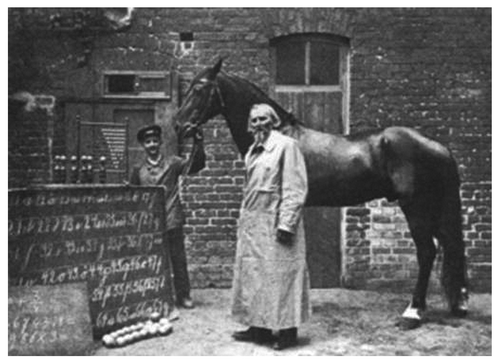
Wilhelm von Osten with Clever Hans
Also no surprise, many people claimed it was all a clever trick, but not even horse trainers could catch von Osten out. Some skeptics came up with alternative explanations—thought-waves, magnetism, hypnotic suggestion—that were more outlandish than any claims about Hans’s ability to do math or tell time.
The story gets stranger. In 1904, German officialdom got involved. The Board of Education commissioned a group of experts—including a psychologist, a physiologist, a veterinarian, zoo-keepers, teachers, doctors, retired cavalry officers (including a count), and a circus manager—to weigh in on “whether or not there is involved in the feats of the horse of Mr. von Osten anything of the nature of tricks.” The group was stumped, just like everybody else, and concluded that the case was unlike any “hitherto discovered.” Then, they punted and recommended a follow-up investigation. The London Standard trumpeted: “‘Clever Hans’ Again: Expert Commission Decides That the Horse Actually Reasons.”
Oskar Pfungst, a comparative biologist, psychologist, and protégé of the chair of the panel, took on the challenge. He ran hundreds of careful experiments. He ruled out secret assistance from von Osten by having neutral parties pose the problems when von Osten wasn’t present. Still, the horse could tap out the answer. He ruled out assistance from bystanders by keeping them away when questions were asked. Still, the horse could answer. Pfungst himself asked the questions and must have been perplexed when the horse answered. Finally, he determined that Hans failed in two situations, when the horse couldn’t see the questioner and when the questioner didn’t know the answer. “Hans can neither read, count nor make calculations,” Pfungst declared in his 1907 book, Clever Hans: The Horse of Mr. von Osten (translated into English in 1911). “He knows nothing of coins or cards, calendars or clocks, nor can he respond, by tapping or otherwise, to a number spoken to him but a moment before. Finally, he has not a trace of musical ability.”
The horse, it turned out, wasn’t responding to what people asked but reading the body language of the questioners, even though the questioners, including von Osten himself, had no idea they were doing anything. Using subtle physical cues—a tiny shift in posture, a relaxation of tense muscles, a raised eyebrow—that all human observers had missed, the horse could tell when he had reached the correct answer and stop tapping.
The Clever Hans sensation was over. As far as the public was concerned, there was nothing extraordinary or intelligent about Hans. As far as scientists were concerned, the whole affair was an embarrassment. Though von Osten wasn’t a conman, many people, including some prominent scientists, felt fooled–and foolish.
The story might have ended there but didn’t. In debunking claims about Hans, Pfungst had made an important discovery—unconscious cueing—that has shaped the design of experiments ever since. This is why Clever Hans shows up in psychology textbooks and on Wikipedia. Psychologists dubbed it the Clever Hans Effect: when an experimenter unintentionally and unwittingly conveys a desired answer or behavior, and the subject, animal or human, reads and interprets the signal and thus skews the experiment’s results. Today, when a researcher asks a dog to fetch a toy by name, the toys are always placed out of the researcher’s sight.
The case of Clever Hans also fueled resistance to Darwin’s thinking about animal intelligence and slowed the study of animal cognition for decades. Scientists considered the field soft—anthropomorphic and amateur, like von Osten—and discouraged younger scientists from exploring animal intelligence, steering them toward behaviorism instead. Behaviorism frames animals as mechanistic, rather than as beings with flexible minds. According to this line of thought, animals respond to stimuli, seek rewards, and avoid pain and punishment; or they behave entirely according to instincts that are programmed by genetics. De Waal, who was one of those young scientists at the beginning of his career but became one of the world’s leading researchers into how animals think, decries this “paralyzing skepticism” toward animal intelligence.
While Von Osten overvalued Hans’s intelligence because he thought it resembled ours, the generation or two of scientists after von Osten undervalued animal intelligence because they thought it didn’t resemble ours. The animal behaviorists tested animals in areas of human strength and noted their shortcomings. They failed to imagine, much less test, animals’ other areas of cognitive strength.
But the beauty of science is that people keep asking questions, gathering and examining evidence, and asking more questions. Over time, a new understanding emerged. Scientists began to conceive of a species’ intelligence in relation to its particular biology, ecological niche, and evolution. What are an animal’s anatomy and sensory abilities? What are its physical needs? What is the animal’s environment, how does it interact with that environment, and what kind of problems must it solve to survive? Each species, de Waal explains, “deals flexibly with the environment and develops solutions to the problems it poses. Each one does it differently.” Intelligence, like everything else, evolves within an ecological framework and takes many forms.
This evolutionary story started with Eohippus, also known as the Dawn Horse, roughly 45 million years ago. This animal was so different from our idea of a horse that it took paleontologists years to realize there was any relationship at all. The Dawn Horse stood 17 to 20 inches high. It had an arched flexible back, raised hindquarters, thin legs, feet with toes (four padded hooves in front and three in back), a shorter muzzle, and a much smaller, simpler brain. It actually looked more like a dog—with a dash of miniature deer thrown in—than a horse. It lived on leaves and fruit in a dense tropical forest habitat, where it browsed, scurried, and hid from predators.
How did this creature become the animal we know? The world around it changed, and it changed with the world. Starting about 18 million years ago, the climate cooled and dried, and the lush tropical forest gave way to grass. Although fossils of Eohippus have also been found in Europe and North America, Equus evolved on open plains in what is now Montana and spread across the world from there. According to Niobe Thompson, the creator of the PBS Nature series Equus: Story of the Horse, “grass shaped the horse.” Two factors were at play. First, grass was plentiful, though much less nutritious than leaves and fruit, so the horse had to spend a great deal of time grazing. And, second, open grasslands provided no cover from predators.
Passing through many distinct phases (speeding through evolutionary dead ends, successes, and millions of years!), the horse adapted. To crop and chew the grass, it added teeth and its muzzle grew longer. Since it could no longer hide, it had to outrun predators, so the horse grew bigger, stronger, and faster. Its legs lengthened, and its toes fused to form single hooves that served as shock absorbers as it ran. By essentially running on tiptoes, the horse minimized contact with the ground and maximized speed. Its leg ligaments evolved so it could run without having to bulk up on leg muscle. The horse specialized for speed.
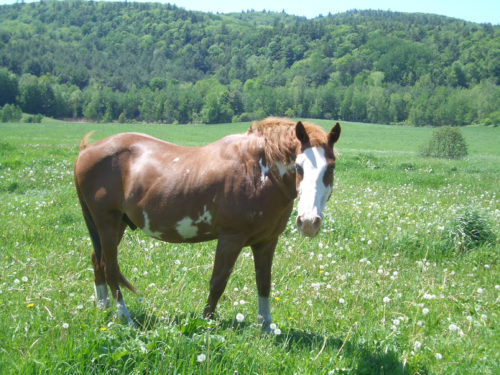
The horse’s sensory perception adapted, too. Its eyes, the largest of any land animal, are set high on the head and on top of a long neck. This means that the horse can scan its surroundings even while its long muzzle dips down in the grass. It can’t see directly in front or behind, but its vision covers 350-degrees. Its eyesight is keen: in daylight, it’s comparable to ours, and in the dark, better. Its lips, with nerve endings like our fingers, and whiskers are highly sensitive and enable the horse to explore what it can’t see right in front of its nose, while keeping an eye out for danger.
The horse evolved another kind of protection as well: the community of other horses. The predators the horse faced were not only large and fast but cooperative. In response, it became a cooperative defender, and a social being. The basic unit is the band: an intensely social, complex group that averages between 4 and 18 individuals, but can include as many as 35. A number of bands inhabit overlapping home ranges; share some resources such as waterholes, mineral licks, and wind breaks; and form a herd. In winter, the herd is more likely to gather for shelter and mutual self-defense.
The band is a long-term alliance among related and unrelated individuals. It includes a group of mares, their young, and an adult stallion. The stallion defends the mares and the young, not territory. There is some coming and going from the band, as the young mature and leave to join other bands in the larger herd, new mares join, or a new stallion displaces the old one. There are also bachelor bands, made up of young stallions and occasionally an older stallion who has lost his harem. Within a band, competition and bonding coexist. A dominance hierarchy determines which horses get first access to resources and avoids outright fights. A mare, though not necessarily the biggest or strongest, or the stallion is the band leader. Within the band, mares form smaller alliances of two to four individuals, who approach and follow one another, cooperate and share tasks, rest together (one may lie down to sleep while another stands watch nearby), make physical contact, and groom each other. Most intimate of all is the relationship of a mother and her offspring. Thus, horses live within circles of interwoven and increasingly close alliances: herd, band, partnership, family.
For prey animals, fear dominates, so horses are high strung and always alert to threats. They are equally alert to members of their band. Claudia Feh, who has spent years studying horses in the wild, observes: “The retraction of a nostril, the twitch of an ear all appear to have meanings to their social partner, and from the point of their nose to the tip of their tails, horses seem to communicate continuously.” Like some other species, they also attend to the alarm calls of other species around them. Their alertness and communication with one another turn the band into a finely tuned surveillance system that greatly increases the chances of survival for the individuals within it—with strength in numbers and multiple sets of eyes and ears. A lone horse is a horse in danger.
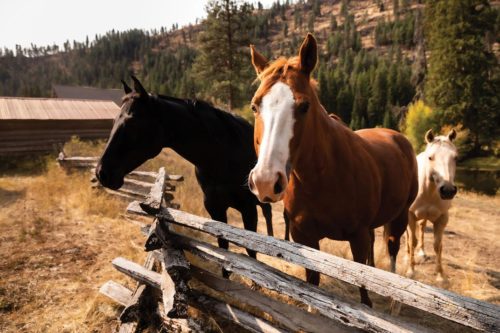
Photo: Brian Smale
All this helps explain how smart horses are. First, complex needs and problems demand complex solutions. The Dawn Horse’s jungle habitat was by no means simple, but food, water, and hiding places were abundant. By contrast, the horse’s grassland habitat posed a variety of complex and variable problems, concerning nutrition and grazing sites, water sources, mineral licks, wind breaks, places to escape bugs, seasonal changes, and dangerous cooperative predators—and the horse’s intelligence evolved to meet these challenges. Second, scientists theorize that social animals, especially long-lived ones like horses, develop higher intelligence. Perhaps social interactions pose their own complex and variable problems, demand solutions, and further stimulate the evolution of intelligence. Social life also creates conditions in which individuals can learn from one another. The results: horses evolved large complex brains, acute sensory perception, a strong sense of direction, good visual and auditory memory, and social and emotional intelligence.
Karen McComb, who studies both horses and elephants, points out that horses have “acute emotional awareness.” They are intensely social, emotionally alive, and curious. With mobile faces—seventeen facial expressions have been identified—they express feelings that other horses read and interpret. And like dogs, they turn their social, emotional, and curious awareness on us.
Experiments, published in 2010 and 2018, help explain the Clever Hans Effect–even though this was not the researchers’ goal. (Naturally, the experiments accounted for the Clever Hans Effect in their protocols!) In one, researchers established that horses track human attention, including subtle eye cues as well as body and head orientation. The researchers concluded that “horses are highly skilled at reading human cues to attention” and compare well with dogs. In other experiments, horses not only read and accurately interpreted happy and angry human facial expressions—from large head shots, no less—but also remembered the emotions expressed in the photos when they met the actual people, now showing neutral expressions, three to six hours later. McComb, who participated in these studies, explains in Equus: “They have enough understanding to interpret not only emotion in the faces of their species but emotion in our faces.” Horses are “eavesdropping on the human world all the time.”
In 1907, the dramatic revelation of what Hans could not do had dramatically overshadowed what he could do. Instead of learning how to multiply or recognize a piece of music when he spent hours upon hours with von Osten, Hans had honed his “eavesdropping” skills: he learned how to focus on and follow barely perceptible human signals, and to do so in novel and distracting circumstances. What’s more, he transferred what he learned about von Osten’s cues to other people who questioned him, generalizing knowledge about human behavior–something we consider higher order thinking. The psychologist and animal scientist Douglas Candland comments, “Pfungt’s experiments and observations did not make Hans less clever, but clever in ways that Pfungst did not comprehend.”
Even as we have grudgingly accepted that other animals also think, we have clung to a dualistic view: there’s our kind of intelligence (superior) and their kind of intelligence (inferior). Our assumption that we’re at the top of the intelligence hierarchy gets in the way of our perceiving the evidence of animal intelligence that’s all around us, just as Pfungst failed to perceive the ways that Hans really was clever. We haven’t been imaginative enough about how to think about intelligence. In the title of his 2016 book, Frans de Waal asks a crucial question: Are We Smart Enough to Know How Smart Animals Are? To date, our record has not been so good, but we are finally opening up to new possibilities.
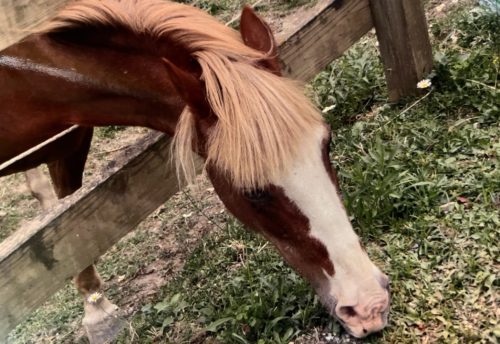
Postscript: What happened to Oskar Pfungst, Wilhelm von Osten, and Hans? Pfungst did no more research with animals but returned to his studies of human psychology. Von Osten’s life was upended. There were no more demonstrations in front of amazed crowds, no more journalists, no more visits from the Kaiser, and, most disappointing of all, no more scientific interest in his work. Did he fear he’d wasted nearly twenty years? He felt betrayed—but by the horse rather than by Pfungst—and threatened to sell Hans to a funeral director so he would have to pull a hearse the rest of his days. Adding suffering to public disgrace, von Osten was diagnosed with cancer, and died in 1909. Initially, Hans’s fate was better. A friend of von Osten’s moved Hans into his stable. But in 1914, World War I erupted and, like horses and young men across Europe and the world, Hans was conscripted to serve in the war. After that, there’s no record of what became of him.
References:
In writing about Clever Hans, Wilhelm von Osten, and Oskar Pfungst, I drew on these sources, along with the contemporary news article (linked in the article).
Douglas Keith Candland. Feral Children and Clever Animals: Reflections on Human Nature. Oxford University Press, 1993.
Frans de Waal. Are We Smart Enough to Know How Smart Animals Are? Norton, 2016.
Oskar Pfungst. Clever Hans (The Horse of Mr. von Osten): A Contribution to Experimental Animal and Human Psychology. Trans. by Carl L. Rahn. Henry Holt, 1911.
Laasya Samhita and Hans Gross. “The ‘Clever Hans Phenomenon’ Revisited.” Communicative and Integrative Biology. Vol 6, #6 (November, 2013).
In writing about horses—their environment, evolution, social lives and mental abilities—I drew on these sources.
“Evolution of the Horse.” Encyclopedia Brittanica, brittanica.com.
Daniel Mills and Sue McDonnell, eds. The Domestic Horse: The Origins, Development and Management of Its Behaviour. Cambridge University Press, 2005.
Leanne Proops and Karen McComb. “Attributing Attention: The Use of Human Given Cues by Domestic Horses (Equus caballus).” Animal Cognition (2010) 13: 197-205.
Leanne Proops, Kate Grounds, Amy Victoria Smith, and Karen McComb. “Animals Remember Previous Facial Expressions that Specific Humans Have Exhibited.” Current Biology (2018), 1428-1432.
Niobe Thompson, writer and director. Story of the Horse: Episode 1, Origins. Public Broadcasting Service, Nature, 2018.
